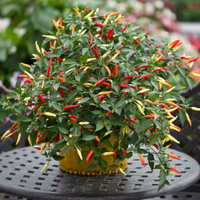How to grow chillis in pots if you want to add some heat to your garden
Feeling hot hot hot? Here's how to grow chilli peppers in pots and containers


Ever wondered how to grow chillis in pots? One of the spiciest (sorry) garden ideas around, this hot take on the edimentals trend has always been touted as a fun project for even the very greenest of gardeners.
As the kind of person who sprinkles chilli flakes into every single dish I'm cooking, regardless of whether or not the recipe calls for it, I've long been obsessed with the idea of growing my own chilli peppers.
This year, finally, is the year I've decided to hop onto this most sizzling of garden trends. And I'm here to tell you first-hand that they really are easy to grow.

I'm not the only one who has these spicy little fruits (because yes, chillis are fruits: all of the hottest peppers are!) pegged as an easy win.
'Growing your own chilli plants can be very rewarding,' promises Morris Hankinson.
'It’s not difficult, and can save you quite a bit of money!'

Morris Hankinson is the founder and managing director of Hopes Grove Nurseries, the UK’s only specialist grower-retailer of hedging plants.
After graduating with a Commercial Horticulture Degree from Writtle College, Essex in 1992, Morris established the award-winning nursery the same year on a half-acre plot at the 25-acre family farm in Tenterden, Kent. The business soon grew to cover the whole farm and now grows hedging plants across three nursery sites in the beautiful Weald of Kent totalling 130 acres, employing 20 full-time local staff, and serving over 17000 customers each year.
Chris Bonnett, the founder of Gardening Express, agrees, even going so far as to describe chilli peppers as the best 'option for beginners who want to try growing homegrown produce'.
How to grow chillis in pots
Chilli 'Basket of Fire' seeds | £3.99 per packet at Crocus
Containing approximately 10 seeds, plant these to grow an attractive, compact and decorative chilli pepper – one that is just as good for eating (and overheating) as it is admiring from a safe distance!
Considering how high up they are on our list of easy garden ideas, do you really have any excuse not to learn how to grow chillis in pots? Especially as we've worked with experts to pull together the ultimate step-by-step guide?
Yeah, I didn't think so.
What you will need
First things first, decide if you are going to grow your own chillis from seed: if so, you will need a seed tray or some old yogurt pots, seed compost, and vermiculite. Alternatively, you could buy a few young chilli plants instead.
Whatever you decide, be sure to do your research,' warns garden expert Christopher O'Donoghue.
'Different varieties of chilli plant will have different growing requirements – and, more importantly, different spice levels. While one might add a pleasant kick to your stir-fry, another might just set your mouth alight!'

A gardener with over a decade of experience under his belt, Christopher set up Gardens Revived with his brother, Andrew, in 2018 to create a thriving family business. Together, they have worked on residential gardens, listed buildings and gardens, flower shows and large estates with some exceeding 70 acres – many with historical significance.
Sage advice, as I'm sure you'll agree.
Once you've sourced your seeds/plants, you will need to look out the following:
- A selection of 13cm and 22cm pots
- A good multi-purpose compost
- A spray bottle for watering
- A natural plant food designed for fruits and vegetables
- A sunny spot for your chilli babies to live
Step-by-step guide
The steps will vary depending on whether or not you are starting your chillis from seed, or tending to young chilli plants you've purchased.
If you're opting for the latter, you'll just need to skip out the first few steps.
1. Plant your chilli seeds
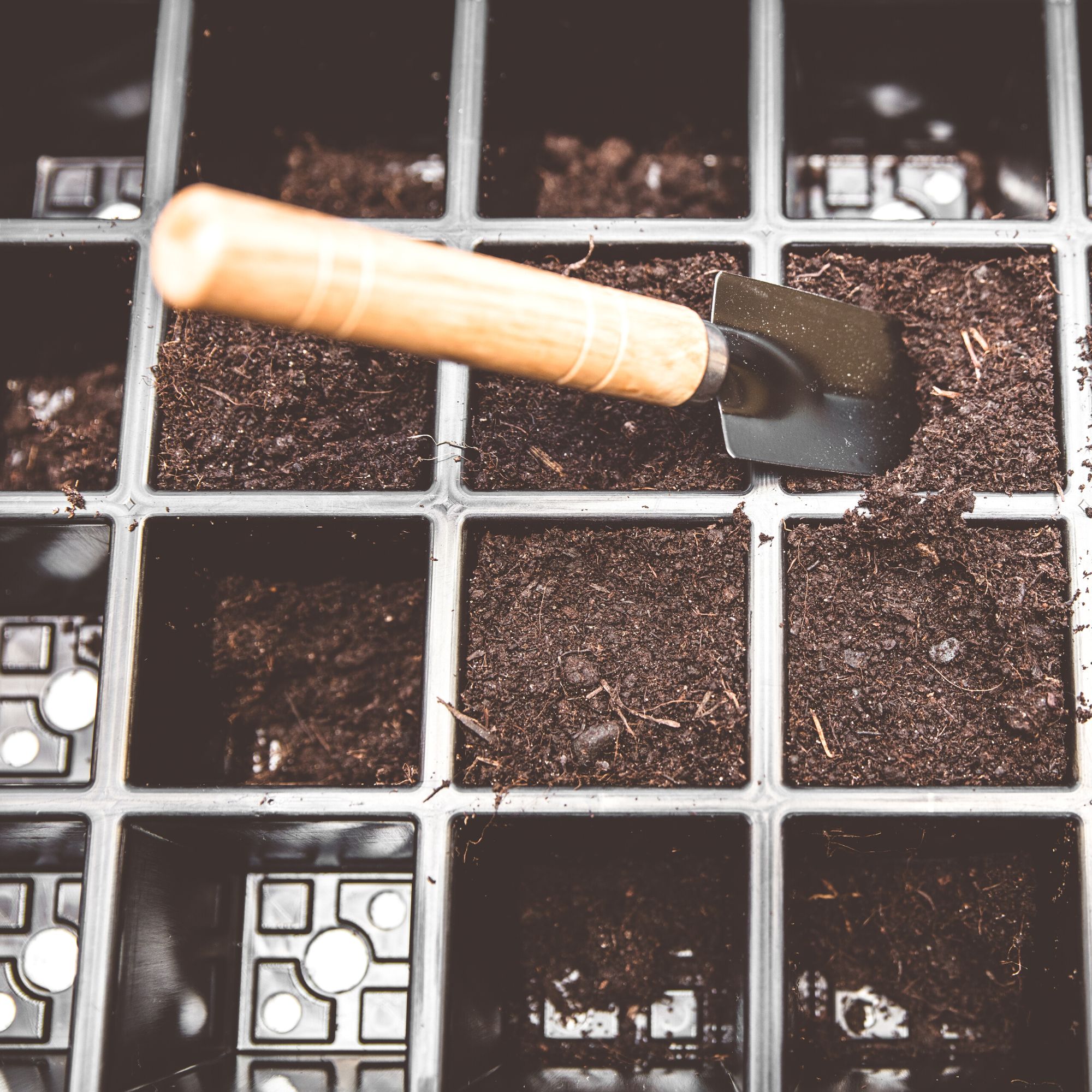
You will want to sow chilli seeds indoors from late winter to mid-spring – the earlier the better, as chilli plants enjoy a longer growing season.
'Sow them in a small pot of seed-starting compost and barely cover them,' says Morris.
'There’s no need to sow a lot more seeds than necessary, as most seeds will germinate,' adds Chris.
Be sure to cover them with a fine layer of vermiculite and water carefully.
2. Cover the seeds with plastic wrap
Chilli by name, chilly by nature: these little plants do not like things cold. In fact, they thrive in warm and sunny conditions.
For that reason, then, Christopher advises popping them in a greenhouse to germinate, or covering them with plastic wrap to create a humid environment.
'As soon as seedlings appear, remove the plastic bag and transplant them into small pots,' he adds.
3. Keep them warm
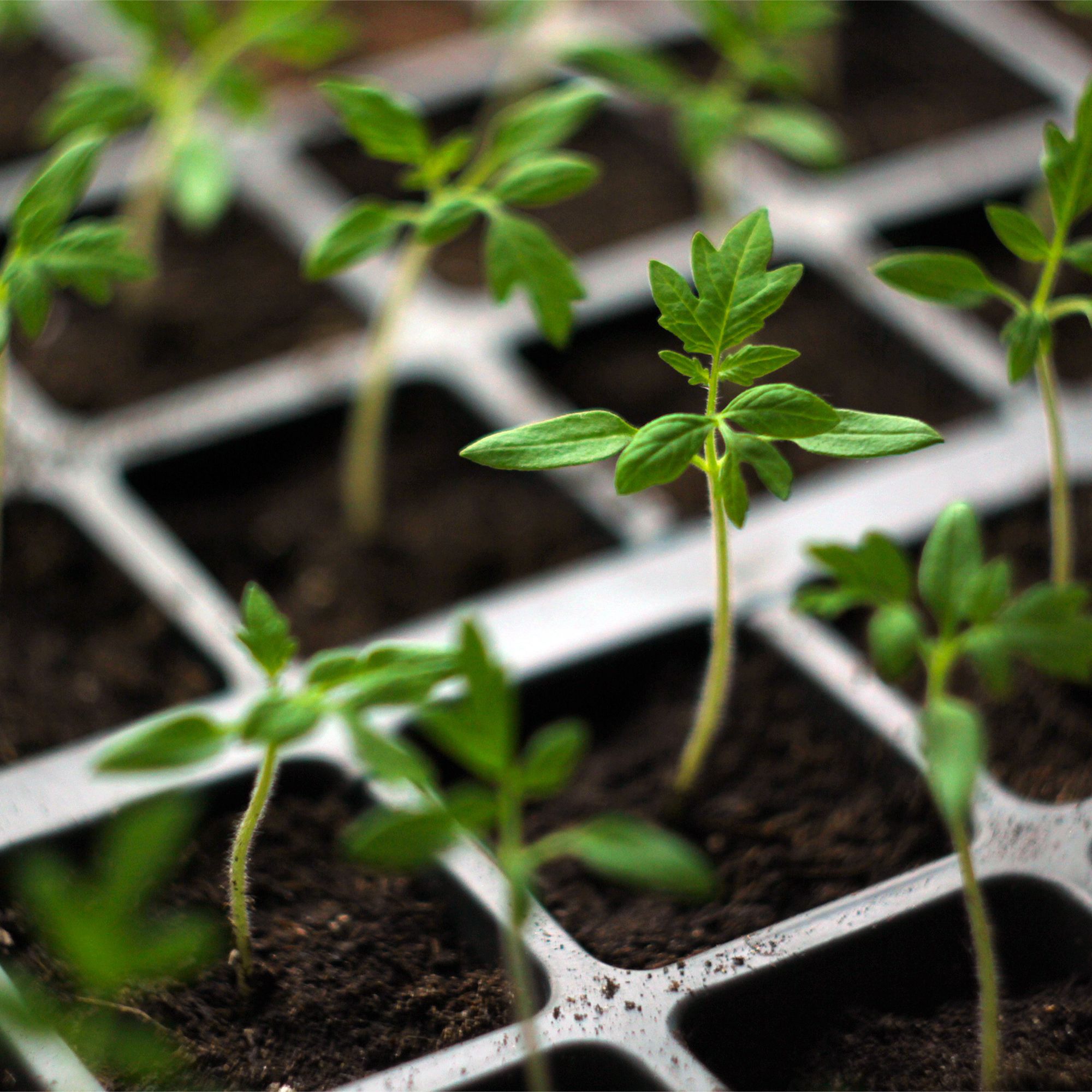
You will want to keep your chillis in a lovely warm spot, like a sunny windowsill, until at least late May/June if you are growing them outside.
'Chillis are tender plants so they cannot be exposed to frost,' advises Morris.
Wherever you pop yours, be sure to place them in a spot that will give them the 6-8 hours of direct sunlight per day that they need.
4. Water little and often
Much like homegrown lemon trees, these are thirsty plants... but they really don't like to get their feet wet.
'Water little and often to keep the compost evenly moist,' says Chris.
Christopher adds: 'Keep the soil moist, but avoid overwatering, as excessive moisture can lead to damping-off disease.'
5. Transplant into larger pots
Once roots begin to show through the drainage holes of your small pots, you will want to move your chillis into 13cm pots.
They will eventually, come late May, move into a 22cm pot – but please don't forget to add canes to keep them from toppling over under the weight of all those lovely peppers.
'Be careful not to damage the roots during the transplanting process,' says Christopher. 'Slow and steady is the way.'
6. Look for the white flowers
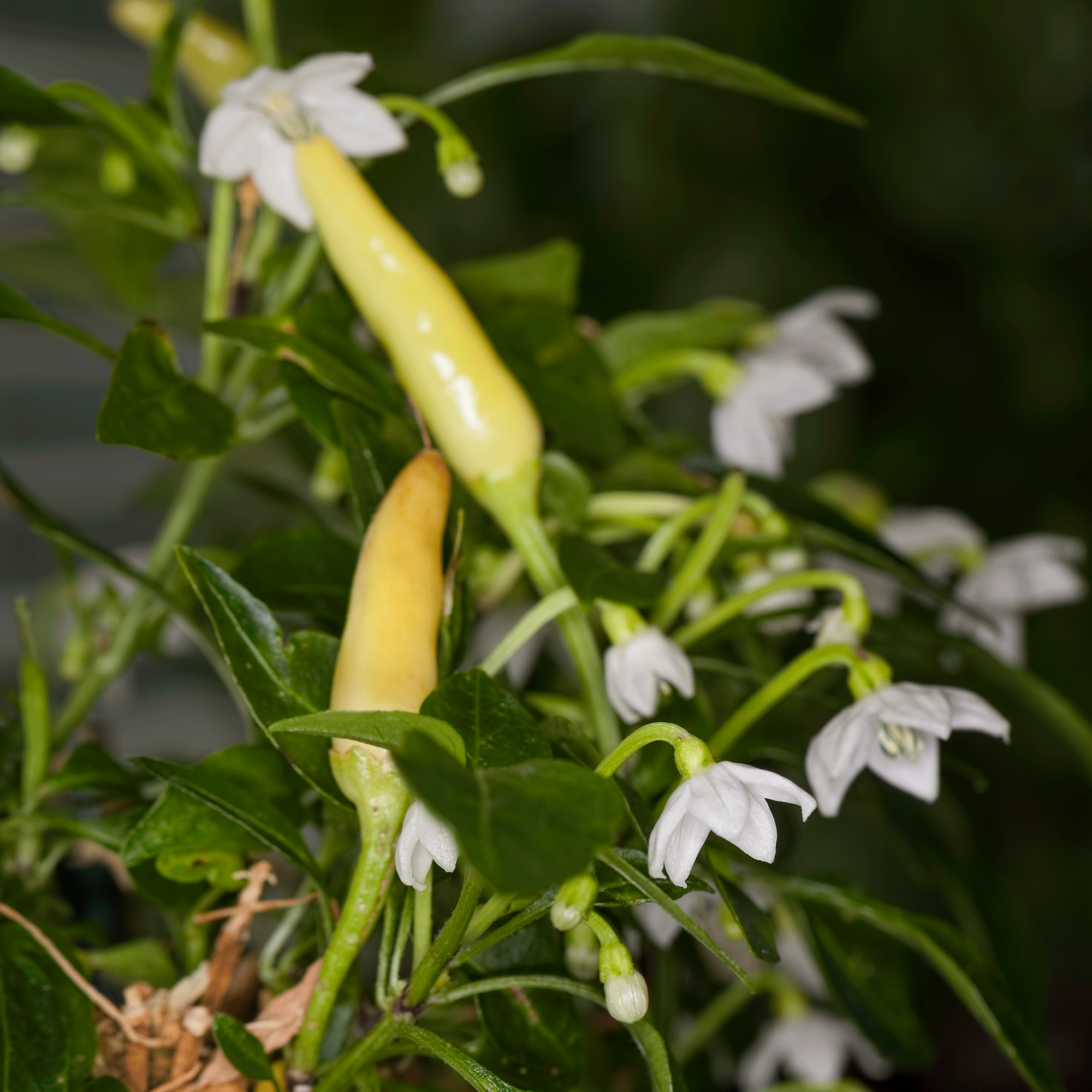
Like so many other fruiting plants, chillis tend to bloom when they are having a great time.
'In early summer you should see the white flowers emerging,' says Morris. 'When these start to develop into small chillis, then its time to give the plants a regular liquid feed with high potassium fertiliser. Tomato feed is ideal.'
7. Harvest and enjoy
Chili plants typically start fruiting after a couple of months, and it's important you figure out your chilli tastes before you start harvesting.
'If you let the fruits mature to the brightest colours, these will be the hottest,' explains Morris. 'However, the plants will stop flowering as the fruits mature, so you will get fewer, hotter chillis.
'Otherwise, you can pick them regularly as they start to colour and have more, milder chillis – the choice is yours!'
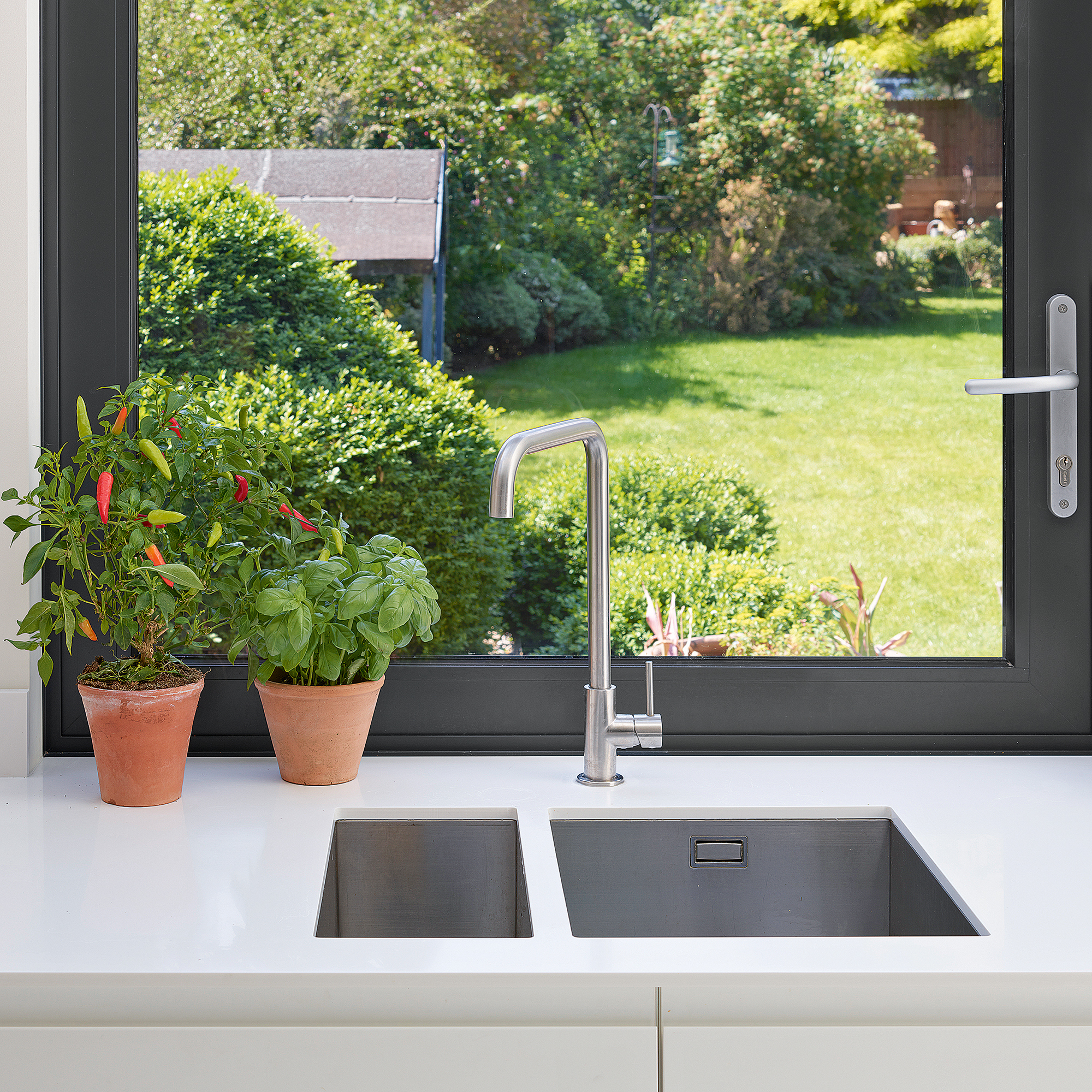
Christopher adds: 'Whatever spice level you go for (you'll get no judgement from me if you want to keep things mild), be sure to savour your spicy rewards by using them fresh or dried when you're cooking.
'Personally, I like to add a handful of very thinly sliced green chillis to my salami pizzas whenever I crack the pizza oven out. It makes me feel like I'm on my holidays!'
Suddenly, my mouth is watering. I'm off to tend to my chilli plants a little more intensely so that I can enjoy a spicy feast of my own...
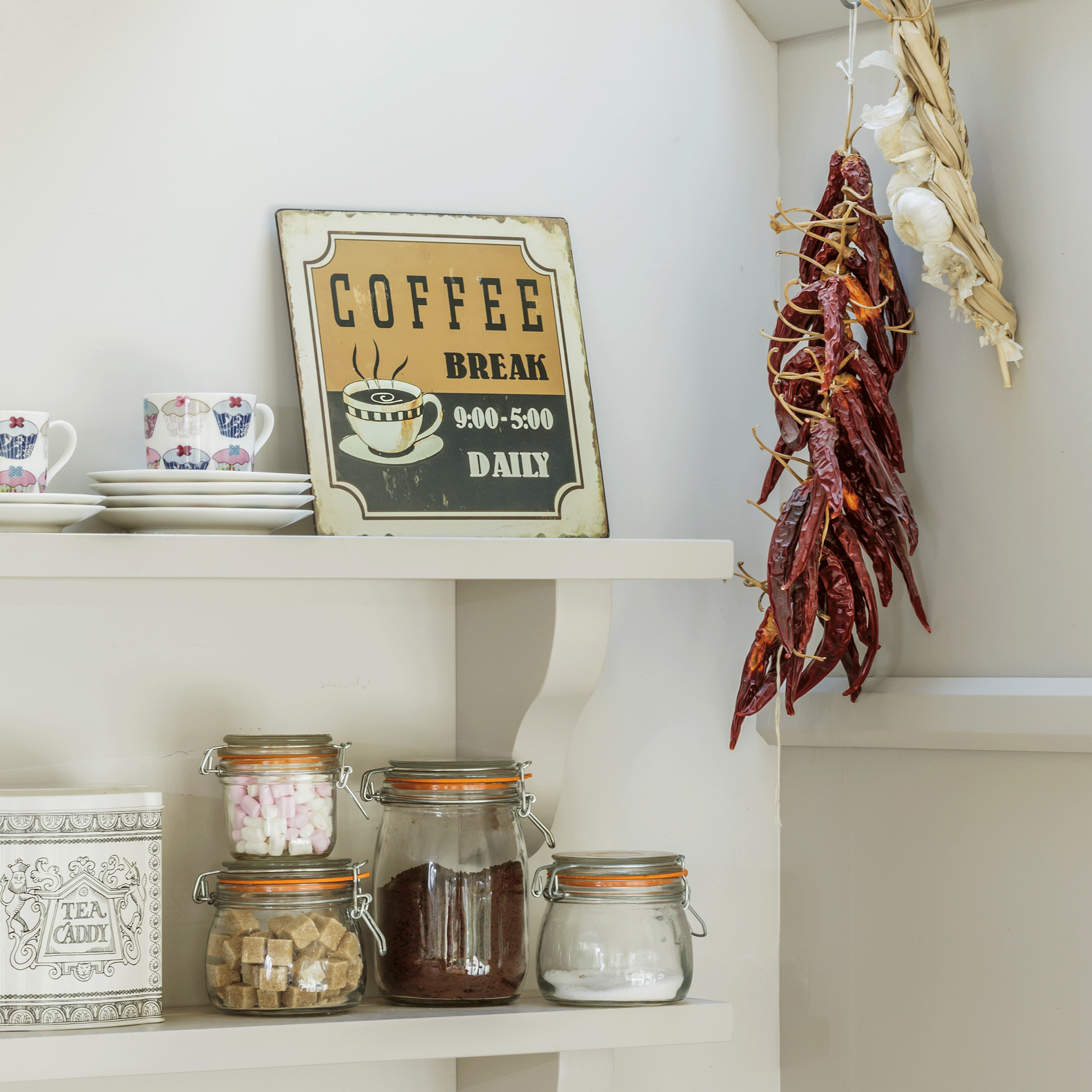
FAQs
Do chillis grow well in pots?
The great news with chilli plants is that they grow very well in pots. This means, says Morris, that 'there are endless opportunities to grow them on a windowsill, terrace, patio, window box, sunny conservatory, greenhouse…..in fact, anywhere that is a sun trap.'
'The warmer and sunnier the growing conditions, the larger the crop and the hotter the chillies will be!' he adds.
How do you know when chillies are ready to pick?
It depends on the kind of spice you're looking for, quite honestly.
If you want a milder chilli, and a longer harvest, Chris suggests you 'harvest chillies when they’re green to encourage further cropping'.
'When they’re left to ripen on the plant, new flowers won’t be produced,' he adds.
How do you care for chillis in pots?
Chillis might be easy to grow in pots, but they still need plenty of TLC. Keep their soil moist, their position deliciously warm and sun-soaked, and top them up with tomato feed every so often. Above all else, don't forget to prune!
'As your chilli plants grow, you can pinch off the tips to encourage a bushier growth,' says Christopher.
'Remove any yellowing or diseased leaves to maintain plant health.'
How do you overwinter chillis in pots?
If you have space on a sunny windowsill or conservatory to keep them warm all year round, your chilli plants will last you a very long time indeed.
'My wife bought a reduced out of date chilli plant from our local Waitrose store a few years ago,' says Morris.
'We kept it on the windowsill in the kitchen for more than 2 years in its original pot. It flowered and fruited at least twice a year and produced hundreds of fiery little chilli peppers about 3cm long that were so hot we only ever dared to add one to a pot of chilli. What a bargain it was!'
Get the Ideal Home Newsletter
Sign up to our newsletter for style and decor inspiration, house makeovers, project advice and more.

Kayleigh Dray became Ideal Home’s Acting Content Editor in the spring of 2023, and is very excited to get to work. She joins the team after a decade-long career working as a journalist and editor across a number of leading lifestyle brands, both in-house and as a freelancer.
-
 Will a conservatory add value to your home and how can you maximise it?
Will a conservatory add value to your home and how can you maximise it?This is what the pros say
By Amy Reeves
-
 I’ve been looking for a new signature scent for my home and The White Company's new fragrance is the exact summer holiday smell I needed
I’ve been looking for a new signature scent for my home and The White Company's new fragrance is the exact summer holiday smell I neededSantorini smells fresh, summery and sophisticated
By Kezia Reynolds
-
 How to remove algae from garden walls in five steps – and the cleaning product experts rave about for tackling it fast
How to remove algae from garden walls in five steps – and the cleaning product experts rave about for tackling it fastExperts share their top tips for getting garden walls algae-free
By Katie Sims
